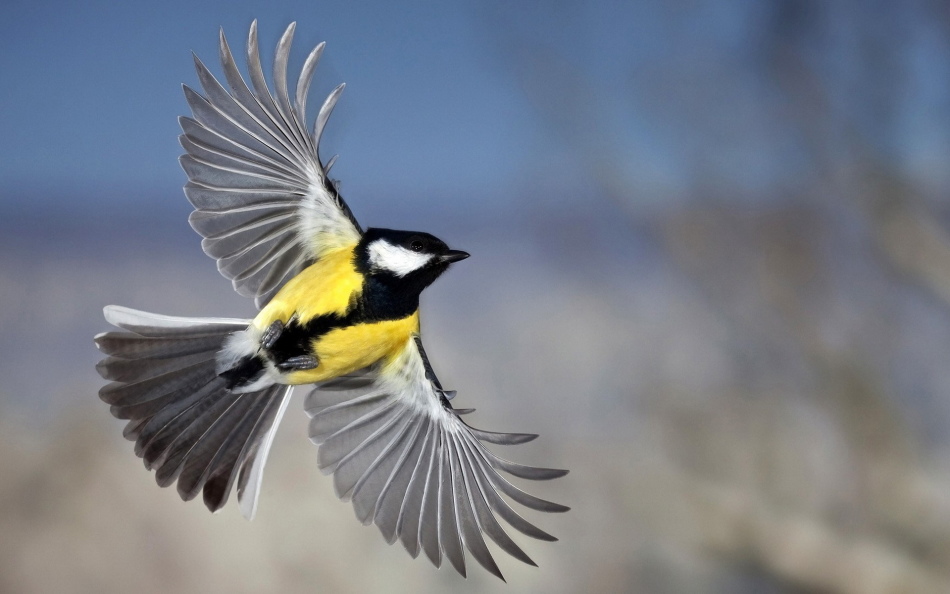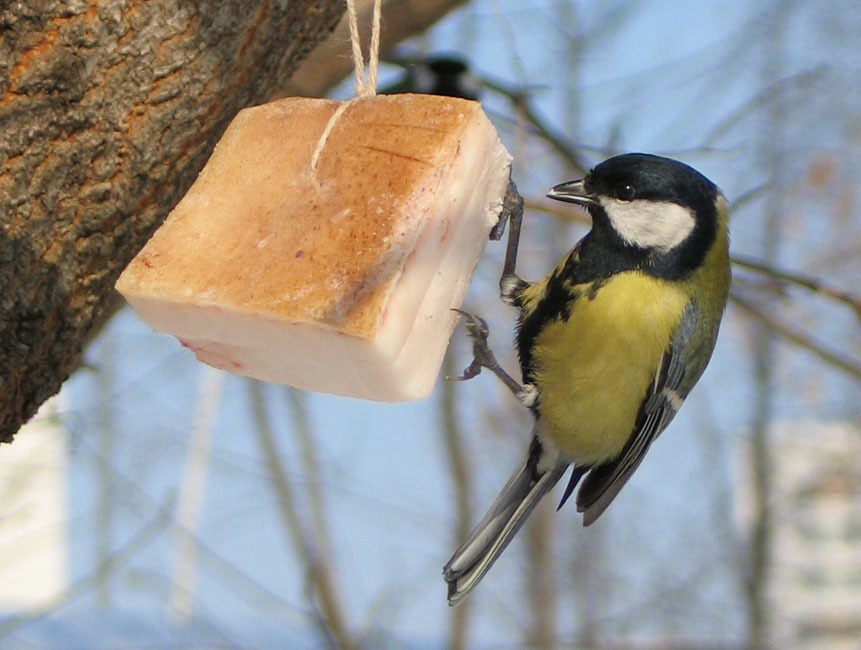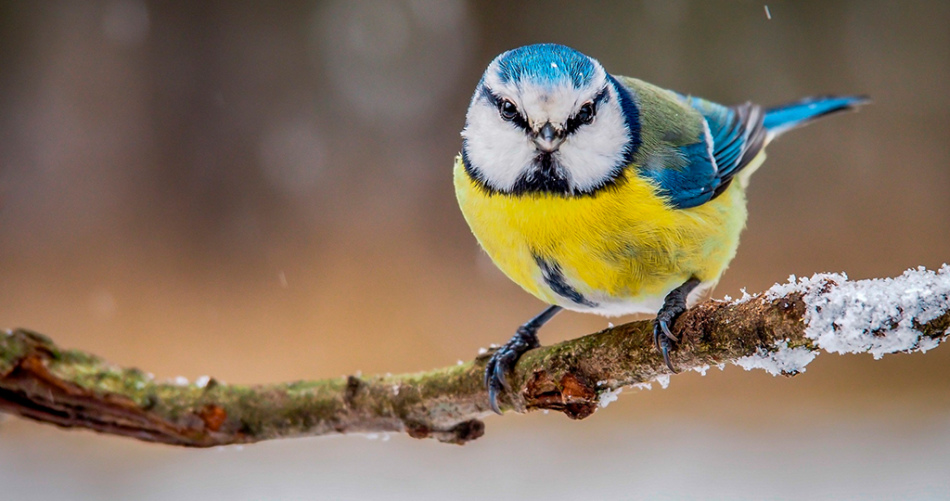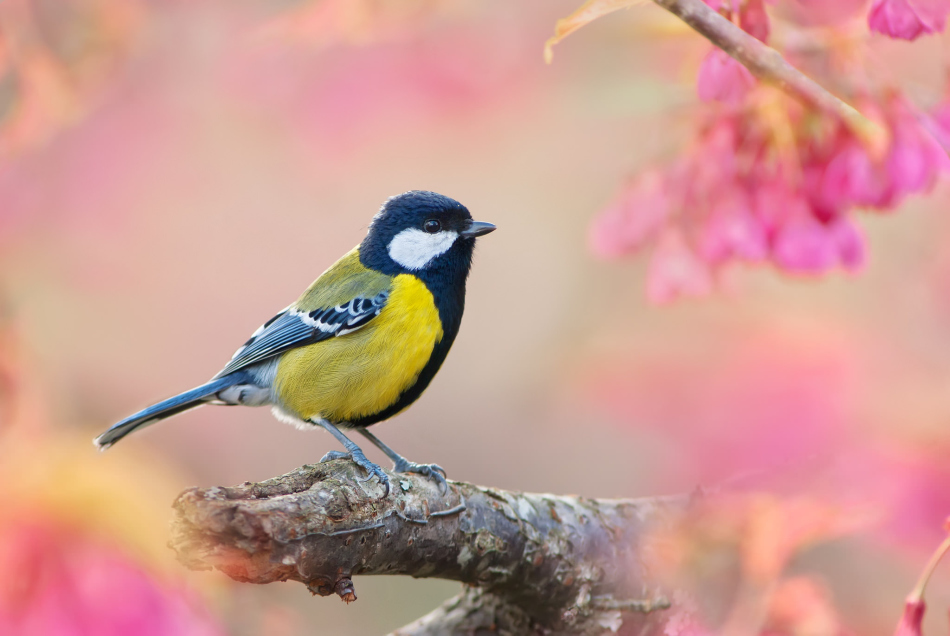In this article, we will examine the bird's bird in detail.
Content
- Tow bird: species, names, photos of tits are large, long -hungry, crested, Moskovka, Pukhlyak
- Tow: predatory, migratory bird or not?
- Characteristic, tint behavior: Description for children
- Where do tits spend the night in the city in the city, where do they fly away in the summer?
- Where does it live, the tit is nesting?
- What does a blue eat in summer and winter in the wild?
- How to feed tits in winter?
- Is it possible and how to feed tits with lard, fried and raw seeds, millet?
- How much a titmous lives: life expectancy in the will and in a cage
- Does the tit with the benefit of a person?
- Interesting facts about tittings: Examples
- Video: 14 Facts about Tints
What animals and birds in our world do not exist. Many people do not even suspect the existence of most of them, but how much do we know about those birds who live side by side with us?
Today we will talk about such familiar and well -known birds as tits and we will figure out what species of these birds exist.
Tow bird: species, names, photos of tits are large, long -hungry, crested, Moskovka, Pukhlyak
The tit is perhaps familiar to each of us, because this bird more often than many others in the field of view. The fragile little frisky birds jumping from the twig to the twig - this is what most people represent the tit with a tit. However, few people occur that there are a huge number of species of these birds and, seeing many other beautiful birds around them, we do not even suspect that they are also blue.
- The family of tits, in general, boasts of about 65 species of small birds, the mass of which usually does not exceed 25 g, and body length is most often 150 mm
- This bird lives not only in our latitudes, it is also common in almost all corners of our world
- Of the most common species of tits, the following are distinguished: a large tit, a titmous tint, a mustachioed tint, a tint of a crest, azure, Moskovka, Pukhlyak, Apolonia
Now let's talk in more detail about each of the above form of this family.
- We will begin, perhaps with Tits are big, she is a big or a grasshopper. This type of Xinichka is very beautiful. The back of this bird has a light green color with yellow shades, the tummy is painted yellow. There is a black strip that runs along the abdomen and chest. The upper part of the head, the lateral parts of the neck, and the neck of this blue is painted black, which in the sun gives the bluish sheen. The sides of the head of the blue have white. The wings of the big man have a gray color, sometimes with a blue tint, and the tail is black.

- Hanging tit. Sinichka suspended is the smallest representative of the family of tits, because its length wings reaches only 45-55 mm.
- Unfortunately, this title cannot boast of its color. The bird of the bird is painted in a yellowish-gray color, in some places giving greenish, in general, this color looks very inconspicuous and inconspicuous.
- Most often, this bird can be seen in Southwest or South Africa.
- A mustachioed tit. Very often blessed blue can be found under the name a beard or a bearded tit, and all because an adult male of this species has a white neck and a black “beard”. The plumage of these birds has a very beautiful color of light brown color, in some places with a yellowish tint. The head of a mustachioed towstone is painted with a blue tint. A distinctive feature of the color of the tail these birds (males) is that the tails of the tail from the bottom have white color.
- A female of a tint does not have a “beard”, its head is painted in a warm brown-beige color. The tails of the tail from below are not white, but beige, milk. Young immature mustachioed tits have a color that is close to warm beige and yellow in color.

- Tow is crested. The tinted is crested or, as it is also called grenadier, is a beautiful and interesting bird. A distinctive feature is its crest, which cannot be noticed even at a distance. It is not difficult to guess that this bird got its name precisely because of the presence of this crest. The whole back of the grenadies is painted in a grayish, brownish color. The crest is painted in small black and white spots, the throat and sides of the neck have black spots. The tummy of the crested tint is white with a yellow tint.

- Blue tit. So we approached the description of the most beautiful bird of the family of tits. The milfrevka has a very unusual bright color, which unequivocally distinguishes it among other birds. A carbard of a small bird, the plumage of which has a bright blue and yellow color. The beak and tail of the tinted are relatively small, the azure itself reaches a length of 10-12 cm. The spinal part of the tit is painted in greenish, but the shade may vary depending on the habitat of the bird. Tummy of the bird is light green with a yellow tint. On Lazorevka’s head there is a “hat” of an affectionate color, 2 blue stripes go on both sides of the beak, there is also a blue strip around the neck. The wings and tail of the bird also have a bluish-blue color.

- Moskovka. This bird can be found under the name Black Tow, a small tit. This bird resembles a big color with its color, however, in size is significantly inferior. The “hat” on the head of the Moskovka has black, “cheeks” have white spots, the back of the bird is gray with a bluish tint, and the belly and the thoracic part are light gray with a light red tint. The tail and wings are painted in dirty black.

- Pukhlyak. Pukhlyaka is also called a nut and a blue bog. This bird has no bright attractive color. The back of the head and head of this tint are painted black. The back and the entire upper body are characterized by a light gray color, the abdomen also has a nondescript color in a dirty white color. The wings and tail are most often painted in dark brown.

- Apolonovka. A long -tailed tit, so they also call an upolonus, is the smallest bird from all tits that live in our area. Despite the fact that the Apolonovka is the smallest tit, it boasts a very long and beautiful tail. The head and tummy of the long-standing blue are painted white, the sides of the bird have a barely noticeable pink tint, the wings are most often dark brown or black, the step tail has a brown-black color.

Tow: predatory, migratory bird or not?
To begin with, let's talk about whether the blue is a migratory bird. In order to understand this issue, you need to understand why some birds fly away in a certain period of time, while others remain at home.
- The first reason why birds fly to other habitats is the lack of food. For example, most birds that fly away, eat insects and other different foods of animal origin. As you understand in winter, to find such food if it is possible, it is extremely difficult, and in order to survive in the cold, birds need a lot of food
- The second reason is cold. Here the animal is completely powerless, because it is naturally unable to change the weather
As for the tits, for the most part they are nomadic birds, because with the onset of cold weather they move from the forests closer to man. In winter, food in the forest becomes very few, so birds move to people in the hope of finding something edible and thus secure themselves a “well-fed” winter. Tits are not migratory birds, since they are not very sensitive to cold.

Now let's talk about the nutrition of these birds:
- In general, they call predatory birds that hunt in flight and have a body structure that contributes to, for example, a sharp beak, large claws. It is clear that under such a description, our little titmouses are not suitable
- Todes are more appropriate to be attributed to insectivorous birds, as they most often eat with different larvae, forest pests, beetles, spiders, butterflies, dragonflies. In winter, it eats plant food more, since at this time it is very difficult to find insects
- It would seem that everything is definitely, the tit is an exclusively insectivorous bird, but there is one “but”. Scientists have proven that some types of tits sometimes hunt for small inaccules (a small bat), as a rule, they hunt for them at a time when the mice have not yet completely woke up from hibernation. Having killed her victim, for example, a big tit, crumbles her brain
Characteristic, tint behavior: Description for children
Sinichi most often appear before us with active fast restless birds and they really are like that.
- Sinichka suspended a very quiet bird, which always behaves neatly and silently. Despite this, she is very clever in her movements: she knows how to inspect the twigs of trees and flowers very quickly and imperceptibly, in which she searches for bugs for food.
- The long-standing tit is very sociable and rarely when very afraid of people, so very often you can meet such a bird living at someone at home. Apolonovka differs from many other birds in that she knows how to sing very beautifully. That is why the poultry farmers who want to teach other birds want to take a long -tailed tit for them as a teacher.

- Cruineers belong to frisky active birds that love to jump from branch to branch, while hanging from time to time from the branch upside down. This blue is not very afraid of people, so she can often be seen next to residential buildings. By its nature, the lazoreshka does not fly very well, but with the help of the legs moves very quickly. Also, this bird can be called curious, as she loves to “put her nose” into any slice and hole in a tree.
- Big tit is a very fast mobile bird. Likes to jump on the branches, hanging upside down on them. A big tit flies well, but to fly, makes frequent waves of wings. Most often, such a bird can be seen in a flock with other titmouses.
- Moskovka is a restless bird that will never sit in one place for a long time. The blue flies quickly and well, while searching for food is also suspended behind the twigs upside down.
- The crested tit can also boast of its activity and restlessness. Most often, it can be seen in the crown of trees, where the bird is hiding from curious eyes.
As you can see, all the hoibs are very mobile and active birds, which rarely just sit on the branches of trees.
Where do tits spend the night in the city in the city, where do they fly away in the summer?
You probably noticed that most often the blue can be seen in winter and late autumn, when the first snow and frosts appear on the street. However, where do these little birds live in the summer?
- Tits are inhabitants of the forest and various forest belts. In a favorable time, that is, in summer and spring, they are there, because they simply do not have the need to fly closer to people. In the forest, they feel very protected, and they have much more food there than in other places.
- With the onset of winter and cold weather, the picture is completely changing. Insects in the forests are becoming smaller, and over time they completely disappear. Here, the hoibs are wandering closer to people and their homes, because they know that they have more chances to find food and winter.

- Tits spend the night in winter in those places where they will be warm and least windy. For the night of these birds, various hollows, cracks in buildings, birdhouses are well suitable, you can also see a titmouse under the roofs of houses. Most often, birds spend the night with flocks, closely straying to each other, because they are much warmer.
Where does it live, the tit is nesting?
As has already been said, mainly the tit lives in forests and forest belts, because it is in such an area that she can feel safe and without problems find food in a favorable period of time.
There is another reason why the title lives a certain period of time in the forest is the need to multiply.
- Sinichi nest in early spring, at this time it is still quite cold and chilly, so their nests should be as warm and comfortable as possible for future chicks. These birds can also nest in the middle of summer.
- These birds are most often arranged in the hollows of trees, you can see the nest of tits directly between the branches of the tree, in any shelters, cracks, holes of buildings at an altitude of 3-6 m.
- As a rule, nests are made of wool and all kinds of feathers, twigs, fluff and moss are also used, and if you are lucky, then cotton wool.
What does a blue eat in summer and winter in the wild?
Tits belong to insectivorous birds and feed on the following insects:
- Invertebrates, their larvae
- Caterpillars of different butterflies, dragonflies
- Spiders, beetles, including weevils
- Midges, flies, mosquitoes
- Do not mind the blue to enjoy aphids
- Ants and bees can also make up a bird's diet
- Ticks
- Sometimes a tit can eat cockroaches, grasshoppers
Such a diet in the blue is mainly in the summer. In the spring, some species of tits can hunt for non-withering from the winter hibernation of non-fiber-carlies.

Starting from autumn and including winter, birds begin to eat mainly with such food:
- Hazel
- Corn grain, wheat, oats
- Pine seeds, linden
- Fruits of lilacs, mountain ash, blueberries, sunflower
- Sometimes they can diversify their diet carrion
I must say that such species of tits as an azure and Moskovka take care of their food from autumn and stock up on the right products - seeds, grains. Other types of tits are most often fed by other people's reserves, which are very good at looking for.
How to feed tits in winter?
Since in winter the blues fly to our homes and gardens, very often we wonder: “How to feed these little frisky birds?” Now we will tell you about the food that can and should be given tips. Why is it necessary? Because in the cold season, these birds are very difficult to provide ourselves with the right amount of food, and we, people can easily help them with this, thereby increasing their chances to successfully overwinter.
So, you can feed the tits:
- Groups, for example, millet, buckwheat. You need to give these cereals in raw form, because the porridge prepared from cereal in the cold will freeze and turn into ice lumps. However, it is worth saying that opinions have parted regarding millet. Some believe that millet is an excellent type of poultry feeding, while others are categorically against such food for birds, because millet is very swelling in the stomach.
- Meat products. Boiled low -fat, unsalted meat and unsalted fat will definitely delight the blue, especially in winter, when they need nutritious food. Despite the fact that many recommend giving tits sausages, we recommend refraining from this venture.
- Nuts. It can be well -known walnuts that are very nutritious and useful. You can also enjoy birds and other nuts.

- Sunflower seeds, as well as pumpkin.
- Croses of bread.
- Apples, watermelon seeds, which are harvested in advance, washing and drying.
- Rowan berries, which are also good for feeding tits.
Is it possible and how to feed tits with lard, fried and raw seeds, millet?
If we talk about feeding these birds by people, then seeds, millet and lard are the main products of their food. However, this does not mean that you just need to throw these products out the window and be satisfied for your good act and tits that they have something to eat. If you want to do a good deed, do it right.
- Salted fat should not be given to tits in any case, because it can lead to problems with the gastrointestinal tract and even lead to death. Moreover, think logically, in the nature of salty foods for tits, that is, their body is not adapted to eating and digesting such food. Fresh lard is great for food eating
- Millet must also be given to the blue in the winter season, but it should be given raw
- Seeds will definitely delight birds, but you can’t fry them, everything is the same as with salty lard, so buy fresh seeds and be satisfied

Now we present to your attention an excellent mixture of food for feeding tits:
- In equal proportions, mix the sunflower, pumpkin, watermelon seeds, add several peeled walnuts, bread crumbs, if any, you can add mountain ash berries
How much a titmous lives: life expectancy in the will and in a cage
Sinichi are very sociable birds, very often they live very close to our houses, which is why such a bird can often be seen at someone at home, as a pet.
Despite the fact that Sinichka is almost always perfectly adapted to new living conditions in the house, this bird is basically not suitable for maintaining a house - so it is opened by nature. It would seem, based on the foregoing, the tit in the will lives a much longer life than a tit in captivity, but no, everything is completely different.
- In nature, that is, in the forest, a blue can live a very short life. About a bird lives from 1.5 to 3 years. Registered 1 case when the tit has lived for about 10 years
- While at home, in warmth and care a tit can live for about 15 years
Does the tit with the benefit of a person?
Many people do not attach much importance to these birds, because all their work is not particularly visible to us, people with the naked eye. Despite this, the benefits of tits are colossal, because these little brisk birds are real fighters with pests and their larvae.
- Just imagine, this nondescript bird can fly out of the nest for 1 day about 300 times in order to find food for yourself and your chicks
- 500 times can fly out of the nest gray flycatcher
- For these 300-500 sorties, the bird brings about 300-600 different insects to the nest
- Even in the cold winter, a titmor saves trees and a future harvest, because under the bark of trees she searches for pests and eats them

"Does the tit with the benefit bring a person?" - This is definitely brings and this benefit is very great, so people should also treat the birds with respect and, if possible, feed them.
Interesting facts about tittings: Examples
Despite the fact that the hoibs live very close to people, we know about them at all, or even nothing at all. Therefore, we offer you to get acquainted with the most interesting facts about these birds.
- Tits have long been considered incredibly useful for humans birds, therefore, a decree was issued in Russia, which stated that a strict punishment in the form of a fine was waiting for the extermination of human tits
- Despite the fact that only 1 type of tits is most common in our area, the Bolshak, in nature, there are about 65 of their species
- Many people think that the bird got its name because of the blue of the plumage, but the tits rarely have this color in color and this causes surprise. However, in fact, Sinichka got her name because of the sounds that she makes, if he listens, you can hear “Si-Sin-s”, hence the title

- During the period of feeding the chicks, the tit gives them food about 35 times per hour
- Most tits are excellent flyers, despite the fact that they wave their wings very rarely, they fly very quickly and briskly
- Tits are very sociable birds and, if desired, can be tamed
- Almost all tits build nests already in hollowed hollows, since they themselves do not know how to do this
The tittings are insanely beautiful and useful for man and the nature of the bird, which is why we must make maximum efforts, so that in the winter period they would be comfortable and so that they are not hungry.








I dare to correct the author. Not Apollonovka, but Opovlovnik.
Really correctly senior or long -tailed title
In winter, I feed sparrows and tits. The feeders are nearby. I pour the sparrows on millet, the blue -downs, crushed nuts, lard. Sparrows do not turn to the feed of tits, and tits on millet sparrows. And only if someone does not have food, then reluctantly, they can ask other food. Sparrows cannot spread seeds, so they do disgrace.